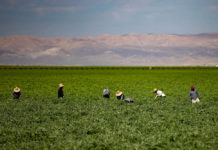The Russian River Watershed contains a bountiful supply of creeks that provide us with open space, wildlife habitat, flood control, and recreational opportunities. To show our appreciation for our creeks, September 19 through 27 was Creek Week, but anytime is a great time to discover and celebrate not only the Russian River, but all of the tributaries that form our watershed.
Ideally, the spirit of Creek Week continues throughout the year. After all, while we specifically celebrate our birthdays, we might not reach our birthday each year if we don’t spend a little time every day to care for our well-being. To that extent, Mendocino and Sonoma Counties, along with their municipalities, conduct outreach and volunteer programs to help keep pollutants from entering the river and its tributaries.
The main conduits for pollutants entering our natural waterways are through roadside ditches and networks of pipes in storm drain systems. All of the various storm water programs depend on an informed and proactive community to keep the river and its creeks clean and healthy. Are you doing all you can?
How many of the following eight actions are you doing to help take care of your local creeks?
1. Educate yourself. Start by learning about your neighborhood creek. What is its name? Where does it come from? Where does it go? Does water flow all year round? What plants are growing along the creek? Is there habitat for birds and other animals? A good starting point is the USGS Hydrography National Map Viewer. The following link takes you to an interactive map, in which you can zoom to your area of interest and learn the names, origins, flow directions, and final drainage points of creeks near you: http://nhd.usgs.gov/
2. Put litter in its place. You can help by keeping the street gutters or ditches in your neighborhood free of trash – including leaves and yard clippings that can also contribute to street flooding. Unfortunately, many people don’t know that whatever enters storm drains in streets and parking lots flows directly to creeks without treatment. Only indoor drains (such as sinks, showers, and toilets) are treated at a wastewater treatment plant. If you see litter, pick it up. If not you, then who?
3. Pick up your pet’s poo. Be sure to clean up after your pet – bring a bag whenever your dog takes you for a walk and dispose of it properly in a waste bin. Remind others to do the same. Besides being an unpleasant item for others to encounter, dog waste contains bacteria, parasites, and nutrients that can pollute creeks.
4. Maintain your car. Take care of your creek by keeping your car well maintained and leak free. Until repairs are made, capture drips on cardboard and clean up leaks and spills with kitty litter or other absorbent material.
5. Use a car wash facility. Take your car to a car wash where wash water is contained, cleaned, and recycled. Water that is not recycled is disposed of properly in a sanitary sewer, unlike when a car is washed at home. Dirt and grease washed off of cars in streets and driveways will eventually enter the storm drain system. Even biodegradable soap can pollute creeks before it has time to break down. Professional car washes also save water, often using only half the amount of water than a home washing.
6. Sponsor wildlife. Create wildlife habitat around your home using California native plants that provide food and shelter for birds and other animals. Put up a birdhouse or try a bat house. For river friendly landscaping strategies, visit the Russian River Friendly Landscape Guidelines at www.rrwatershed.org/programs/RRFLG.
7. Enjoy your creek. A fun way to help is to get out and enjoy the many trails that follow urban creeks. Let your local storm water program know what needs attention. Citizens can report problems along creeks such as trash, encampments, trail maintenance needs, water pollution, neighborhood safety, graffiti, and flooding concerns. In return, the cities and counties should make every effort to provide timely and effective responses to citizens’ concerns regarding creek related maintenance, environmental, safety, and recreational issues. Sonoma County storm water information can be found at www.sonoma-county.org/prmd/sw/ and Mendocino County storm water information can be found at www.co.mendocino.ca.us/planning/stormwater.htm.
8. Volunteer. Creeks need your help. Find an opportunity to volunteer with a creek restoration project. The Creek Stewardship Program, Laguna de Santa Rosa Foundation, Russian Riverkeeper, California Coastal Cleanup, and Russian River Watershed Cleanup are great places to start. Creek clean ups also make wonderful projects for clubs, youth groups, or students searching for community service opportunities.
To learn more about how you can help a creek near you, check Additional StormwaterResources on the Russian River Watershed Association’s webpage at http://rrwatershed.org/node/171.
This article was authored by Alistair Bleifuss of the City of Santa Rosa Water Department, on behalf of RRWA. RRWA (www.rrwatershed.org) is an association of local public agencies in the Russian River Watershed that have come together to coordinate regional programs for clean water, fisheries restoration and watershed enhancement.
36.2
F
Healdsburg
March 9, 2025







